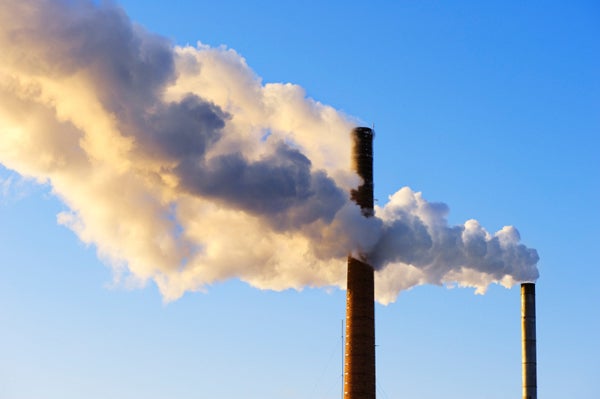|
December 9, 2011
Scrub carbon dioxide directly from the atmosphere? Too expensive, says a Stanford researcher. Better to start with the smokestacks of coal-burning power plants
While it is possible to chemically scrub carbon dioxide from Earth's atmosphere in order to lessen the severity of global warming, the process is prohibitively expensive for now. Best to focus on controls for coal-burning power plants, say researchers. 
Technology exists today for removing carbon dioxide emissions from coal-fired power plants and is much cheaper than removal from the atmosphere. (Photo: Erkki Makkonen / iStock) Someday the world may be in a position to lower the concentration of heat-trapping carbon dioxide in the atmosphere by chemically removing it from the air.
But not soon; the process is simply too expensive, say scientists from Stanford and MIT.
A study published in the Proceedings of the National Academy of Sciences, co-authored by Stanford energy and environmental researcher Jennifer Wilcox, concludes that if air-capture of carbon dioxide with chemicals is ever used, it will be far in the future.
For now, it is much more economically efficient to capture the carbon dioxide that enters the atmosphere from the smokestacks of large centralized sources such as power plants, cement plants, fertilizer plants and refineries.
After a detailed comparison, the research team concluded that the cost of removal from air is likely to be on the order of $1,000 per ton of carbon dioxide, compared with $50 to $100 per ton for current power-plant scrubbers.
Indeed, the researchers say, the cost of removing carbon dioxide directly from the air would be so large that paying for it would require the equivalent of a $10-per-gallon tax on gasoline. The cost estimates are similar to those presented earlier this year in an American Physical Society study, although the APS study emphasized that future costs might come down with new technology.
"Like the PNAS article, the APS report concludes that direct air capture must be powered by low-carbon energy," said Robert Socolow, a professor of mechanical and aerospace engineering at Princeton University who is a co-author, with Wilcox, of the APS study.
"Direct air capture sounds great in theory," Wilcox said. "In reality, though, a lot of energy is required, and using fossil-based energy sources to capture and regenerate the carbon dioxide could readily result in more carbon dioxide entering the atmosphere than is captured.
"For direct air capture to be feasible, carbon-free energy, such as solar or wind, is required. But that carbon-free energy would be used more cost effectively to replace CO2-emitting power plants."
Technology exists today for removing carbon dioxide emissions from coal-fired power plants and is much cheaper than removal from the atmosphere. "The concentration of CO2 in outside air is 300 times less than in the coal-fired flue gases emitted from a power plant. The lower atmospheric concentration makes removal from air much more expensive than removing CO2 directly from the flue gases at the source," Wilcox said.
"Ultimately," Wilcox said, "society needs to move completely away from carbon-based energy resources."
Air capture systems are attractive because they are theoretically possible. "If you look at the ideal equations," said Howard Herzog, a senior research engineer at the MIT Energy Initiative who worked with Wilcox on the research, "it's possible to come up with air-scrubbing systems that appear to be feasible. But if you look at empirical data – how engineers look at this, with real-world efficiencies – you don't find many reasons to be hopeful."
Wilcox is the author of Carbon Capture, the first textbook on the topic, to be published by Springer in March. "It will lead students to the research frontier," Socolow said. "Once there, they may well surprise the rest of us with new concepts and lower costs."
The other authors of the PNAS study are Kurt Zenz House, previously a postdoc at MIT in civil and environmental engineering and currently president of C12 Energy, a startup in Berkeley, Calif.; two researchers from C12 Energy, Antonio Baclig and Ernst van Nierop; and Manya Ranjan, a graduate student working with Herzog.
-30-
|